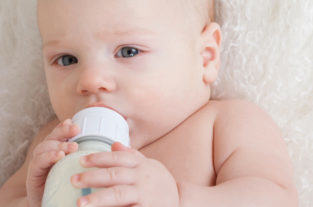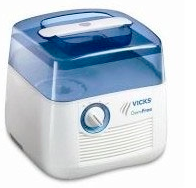From time to time, the media reports on various formula company funded research, highlighting new ingredients being put into formula and then claiming the formula is more like breastmilk. The latest report to hit the headlines is about a study which examined the effect of adding an oligosaccharide (prebiotic) to formula on babies’ immune function. Subsequently, various misleading and sensationalist headlines appear, such as “Does this end the ‘breast is best’ debate?” and “Biggest scientific breakthrough in 10 years narrows gap between formula and breast milk”. Will Formula Makers Be Able To Replicate Breastmilk? As science evolves and more research is done, does this mean formula could become more and more like breastmilk? Could it in fact ever be like breastmilk? Well, the short answer is no. But let’s explore why a bit further.
Breastmilk Is A Living Fluid Breastmilk is a complex and unique living fluid, containing live cells such as white blood cells. White blood cells attack and kill pathogens by engulfing and absorbing them or by making substances that are harmful to them. Formula contains no living cells. Breastmilk Changes To Meet A Baby’s Needs Breastmilk changes during the course of a breastfeed, and from day one, to day seven, to day 30, and so on. For example, the breastmilk made by a mother of a premature baby has different concentrations of various substances to suit her baby’s special needs. When weaning occurs, a mother’s breastmilk increases the concentration of immune protective factors to give her baby a final dose of immune protection before weaning is complete.A mother’s breastmilk is made as required to suit her baby, depending on the baby’s age and needs at the time. Formula is the same from day one, to day seven, to day 30 and so on. Breastmilk Contains Over 200 Different Oligosaccharides Breastmilk contains not one, but over 200 kinds of oligosaccharides, making them the third most abundant substance in breastmilk. Oligosaccharides act as prebiotics (food for the good bacteria), anti-microbial factors and enhance the maturation of a baby’s gut.
No other natural resource can provide access to the large amounts of oligosaccharides that are in breatsmilk. Formula does not provide a human baby with human milk oligosaccharides. Instead, non-human milk oligosaccharides are added to some formulas, such as galactooligosaccharides (GOS) and fructooligosaccharides (FOS). Breastmilk Contains A Host Of Immune Protective Factors Breastmilk contains all the nutrients babies need, in a form that is easily absorbed. It contains a host of immune protective factors tailored to each baby and the environment he or she lives in. Examples of immune protective factors in breastmilk include IgA, lactoferrin and lysozyme. It’s estimated there are more than 100 substances in breastmilk that are not present in formula. For a detailed insight about the history of formula, read Maureen Minchin’s book, ‘Milk matters: Infant feeding and immune disorder’. Finally, in the words of Gabrielle Palmer: ‘’If a multinational company developed a product that was a nutritionally balanced and delicious food, a wonder drug that both prevented and treated disease, cost almost nothing to produce and could be delivered in quantities controlled by the consumer’s needs, the very announcement of its find would send its shares rocketing to the top of the stock market. The scientists who developed the product would win prizes and the wealth and influence of everyone involved would increase dramatically. Women have been producing such a miraculous substance, breastmilk, since the beginning of human existence.”



